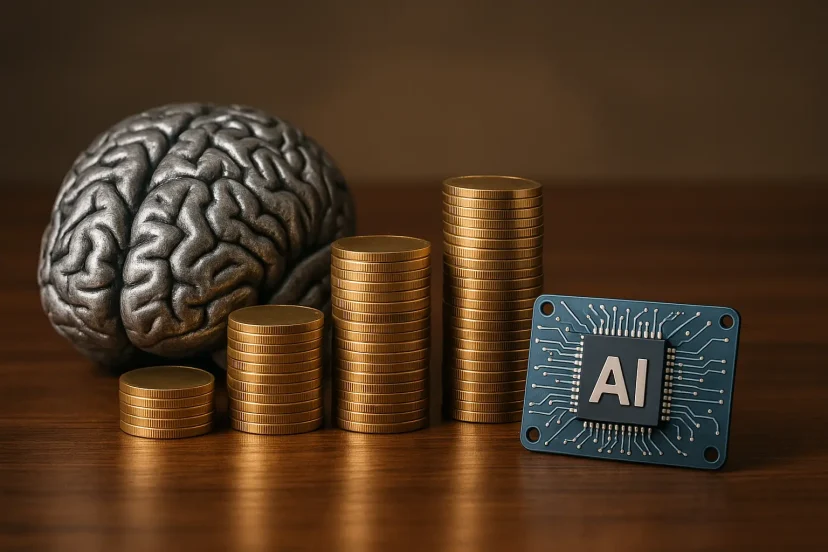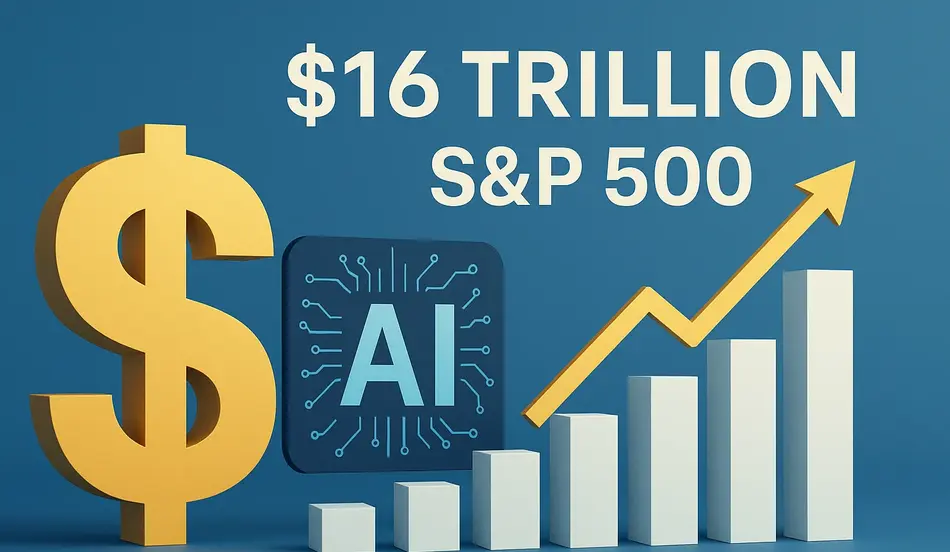Morgan Stanley Sees a $16 Trillion economic impact from artificial intelligence, projecting that widespread adoption of AI technologies could significantly reshape the long-term value of financial markets. In a recent report, the investment bank estimates that productivity gains, cost reductions, and accelerated digital transformation could unlock as much as $16 trillion in additional market capitalization over the coming years.
The scale of the opportunity Morgan Stanley outlines reflects a growing belief among analysts that AI is not just a disruptive technology it’s a structural growth driver for the next decade. Whether or not Morgan Stanley sees a $16 trillion outcome fully materialize, the forecast highlights the massive potential tied to AI integration across sectors like finance, retail, logistics, and consumer goods.
The prediction positions AI not just as a tech trend, but as a defining economic force for the next decade—comparable to the internet boom, industrial automation, and even the electrification of the 20th century.
Yet while investors are salivating at the potential, the implications for jobs, wages, and the workforce are more complex. AI may simultaneously create new categories of employment while displacing large numbers of traditional white-collar roles.
Table of Contents
Explaining Why Morgan Stanley Sees a $16 Trillion Upside from AI
Morgan Stanley’s research breaks down AI’s contribution into three main buckets:
- Productivity Gains: AI promises to automate repetitive tasks across industries, freeing up human capital for higher-value work.
- Cost Savings: From logistics to compliance, companies stand to save billions annually through streamlined operations.
- Revenue Expansion: AI-enabled innovation—such as personalized advertising, predictive healthcare, and advanced robotics—could open new revenue streams worth hundreds of billions.
The firm estimates that AI could generate nearly $920 billion annually in direct benefits to U.S. companies over the next decade, compounding into trillions in shareholder value.

Industry Winners and Losers
Winners
- Tech Giants: Companies like Microsoft, Alphabet, and Nvidia are at the epicenter, supplying both infrastructure and applications. Nvidia alone has seen its market cap swell past $4 trillion thanks to AI demand.
- Healthcare: AI-driven diagnostics, drug discovery, and telehealth promise efficiency and innovation.
- Finance: Banks are using AI to improve fraud detection, algorithmic trading, and compliance monitoring.
- Retail & E-commerce: AI tools for personalized shopping and supply chain management are set to expand margins.
Losers
- Labor-Intensive Services: Sectors like call centers, data entry, and customer service may face contraction.
- Legacy Tech: Companies that fail to adopt AI risk obsolescence.
- Small Businesses: Without capital to invest in AI, they may be left behind as larger competitors scale faster.
AI and Employment: Creation vs. Displacement
While Morgan Stanley frames AI in terms of market capitalization, its ripple effects on employment are unavoidable.
- New Jobs: Roles in AI governance, cybersecurity, prompt engineering, and compliance are growing rapidly.
- Displaced Jobs: Routine administrative work, legal research, and even entry-level finance tasks are at risk of automation.
- Upskilling Challenge: Workers must adapt, with reskilling in data literacy, AI tools, and interdisciplinary problem-solving.
Experts caution that while AI may eventually create more jobs than it destroys, the transition period could be painful, especially for younger workers and those without advanced degrees.
Tap Into the AI-Driven Growth Wave
Post your job on WhatJobs and attract top AI and tech talent—position your company to capture opportunities in a $16 trillion future.
Post a Job Now →Investor Sentiment: Optimism Meets Skepticism
Wall Street has already been buoyed by AI optimism. The “AI trade” has powered much of the market’s gains over the last two years, with chipmakers and cloud providers leading the surge.
But not everyone is convinced:
- Bubble Concerns: Skeptics worry AI valuations echo the dot-com bubble of the early 2000s.
- Execution Risks: Companies may overpromise AI capabilities before scalable products arrive.
- Regulatory Hurdles: Governments worldwide are considering stricter AI oversight, which could slow adoption.
Still, Morgan Stanley argues that even with these risks, the structural gains are too significant to ignore.
Global Implications
AI’s impact is not confined to the U.S. The global economy is expected to feel ripple effects:
- Emerging Markets: Countries with strong IT sectors, like India and Vietnam, may see job growth in AI-adjacent industries.
- Europe: The EU’s AI Act could shape global regulatory standards, balancing innovation with privacy and fairness.
- China: Heavy AI investment may accelerate competition with U.S. firms, especially in semiconductors and surveillance tech.
In this sense, Morgan Stanley’s $16 trillion forecast is as much a geopolitical story as an investment thesis.
Build Your Career in the Global AI Economy
Search WhatJobs for opportunities in AI, data, and emerging tech—whether in India, Europe, the U.S., or beyond. Find the roles shaping a $16 trillion future.
Search Jobs Now →Risks on the Horizon
Even as the numbers excite investors, there are key risks to the AI-driven boom:
- Job Polarization: High-skill roles may expand, but mid-skill jobs risk elimination, widening inequality.
- Ethics and Bias: AI systems trained on flawed data can perpetuate discrimination, raising legal and reputational risks.
- Energy Demands: Training large AI models consumes immense power, raising environmental and infrastructure concerns.
- Geopolitical Tensions: Tech rivalry between the U.S. and China could disrupt supply chains for critical hardware like GPUs.
FAQ: AI and the $16 Trillion Boost
Q1: How realistic is Morgan Stanley’s $16 trillion estimate?
While ambitious, the projection is based on tangible trends in productivity, cost savings, and innovation. However, execution and regulation remain uncertainties.
Q2: Which industries will benefit most from AI adoption?
Technology, healthcare, finance, and retail are expected to be the biggest winners. Sectors heavily reliant on repetitive labor may see contraction.
Q3: What does this mean for jobs?
AI will likely displace routine work while creating demand for AI-focused skills. Workers able to reskill may thrive, while others could face displacement.
Q4: Could this be another dot-com bubble?
Some analysts warn of inflated valuations. The difference is that AI is already driving measurable efficiency gains, unlike many speculative dot-com ventures.
Conclusion
Morgan Stanley’s forecast of a $16 trillion AI-driven expansion in the S&P 500 underscores the scale of the shift now underway. For investors, it signals unprecedented opportunity. For companies, it demands rapid adaptation. And for workers, it raises urgent questions about skills, stability, and fairness in the future of employment.
The AI revolution is no longer speculative—it’s tangible, investable, and transformative. The challenge will be ensuring that the prosperity it creates doesn’t come at the expense of workers left behind.
In short: the S&P 500 may be on the verge of its most dramatic expansion in history, but the future of jobs will hinge on how businesses, governments, and workers respond to the AI era.




